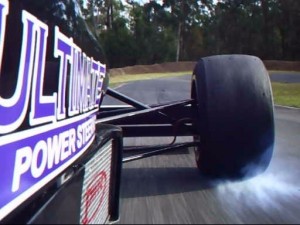Here's the continuation of my last blog, which detailed two different methods to get better fuel economy without having to buy a fancy new car. Now that we've gone over the obvious first step which is to not to have a ridiculous car in the first place, here are some more things you can do without spending a penny to get more miles per gallon out of the current car you have.
3) Keep your car maintained
It's really easy to lose track of when your oil change is due. Face it, everyone at some point or another procrastinates this little nuisance, even I'm guilty of it. Do this and you'll save yourself a little bit of gas, while keeping your car nice and "healthy" if you'd call it that. Aside from that, use the right kind of motor oil if you change your oil yourself.
You can also improve mileage a little more by keeping your tires properly inflated. You can improve your mileage up to 3.3 percent, according to the EPA's numbers. Not doing this apparantly nets you a drop in .3 percent for every psi your tires are off.
And lastly, keep your engine well-tuned overall. If your engine is making weird noises, don't expect your gas mileage numbers to be good. Even worse, faulty sensors can cause all sorts of problems lowering your gas mileage by almost 40 percent. Yikes, but that's only in very serious situations. So pay attention to your car, and look out for warning signs that something is wrong.
4) Keep your ride (reasonably) clean
If your car looks anything like this, for goodness sake, clean it!!

Even if it's just an average "dirty", all the dirt and such will increase drag coefficients and therefore friction when you're driving, making your car work harder to achieve the same result on a clean car. So pay attention to the wash me's that have been etched on your car, it could save your some money (assuming you don't go all out in washing your car by spending 40 bucks on a wax job everytime...).
5) Avoid unnecessary things
You know that fancy bike rack you've mounted on your SUV? Or the ski rack that you're dying to use for that ski trip? Take them off when you're not using them. It's a little bit of common sense, but those things add weight and increase drag coefficients as well.
Also, decreasing the amount of things present in your car can improve mileage. And no, I'm not asking you to throw out your occupants. You're naturally going to get less mileage if you're lugging around hundreds and hundreds of pounds of extra weight, so anything you don't honestly really need in your car, leave at home.
And most unnecessary of all, simply try not to drive unless you have to. Use public transportation if its available (You can argue that those buses and trains and such waste more gas than cars, but truth is that bus is going to use that gas even if you don't get on, so why not take advantage of it?) and if possible, walk or use a bike.
Of course, these are all suggestions. If your heart so desires to run around in a dirty monster truck that's about to fall apart, by all means do it. Just know that your mileage numbers will probably be in the single digits.













